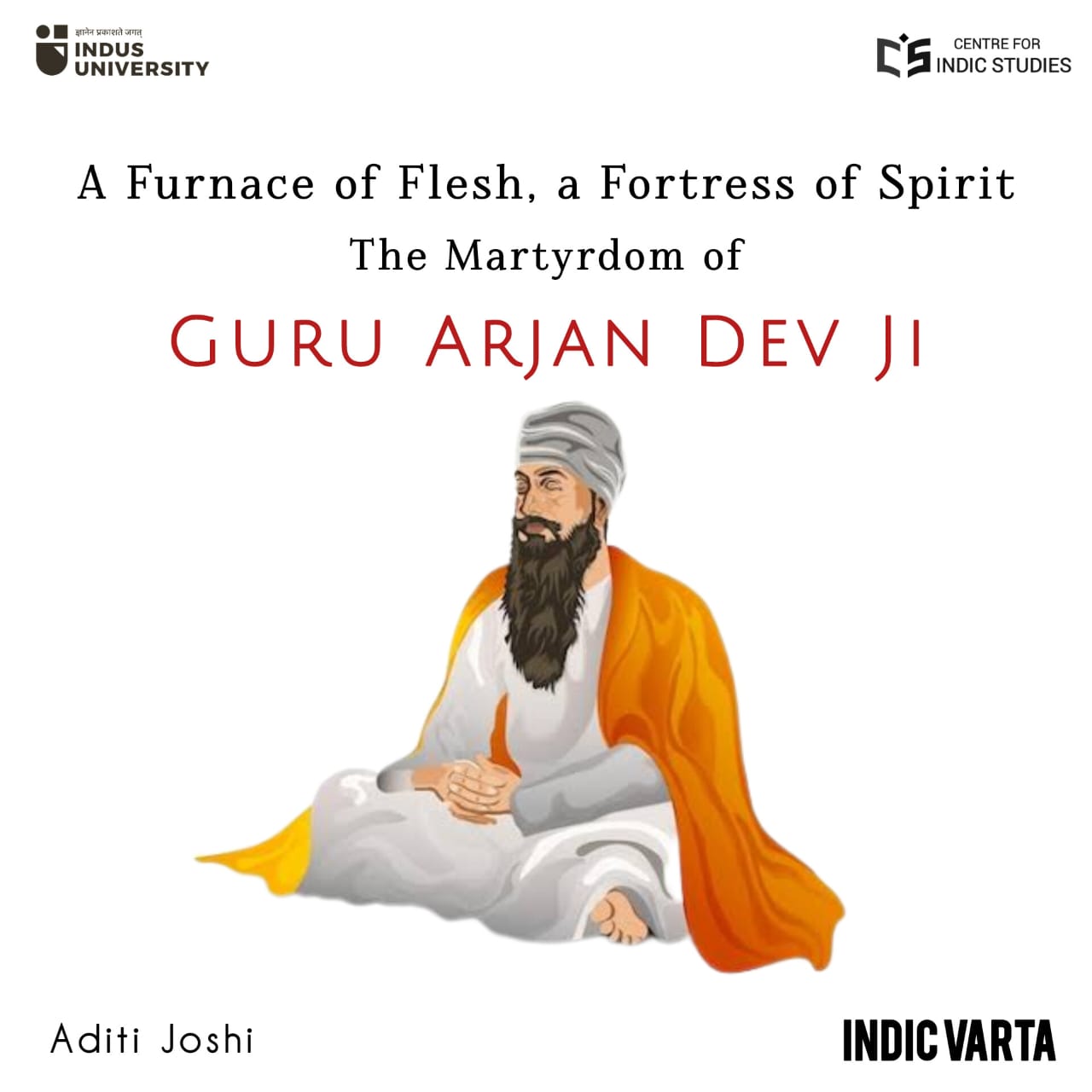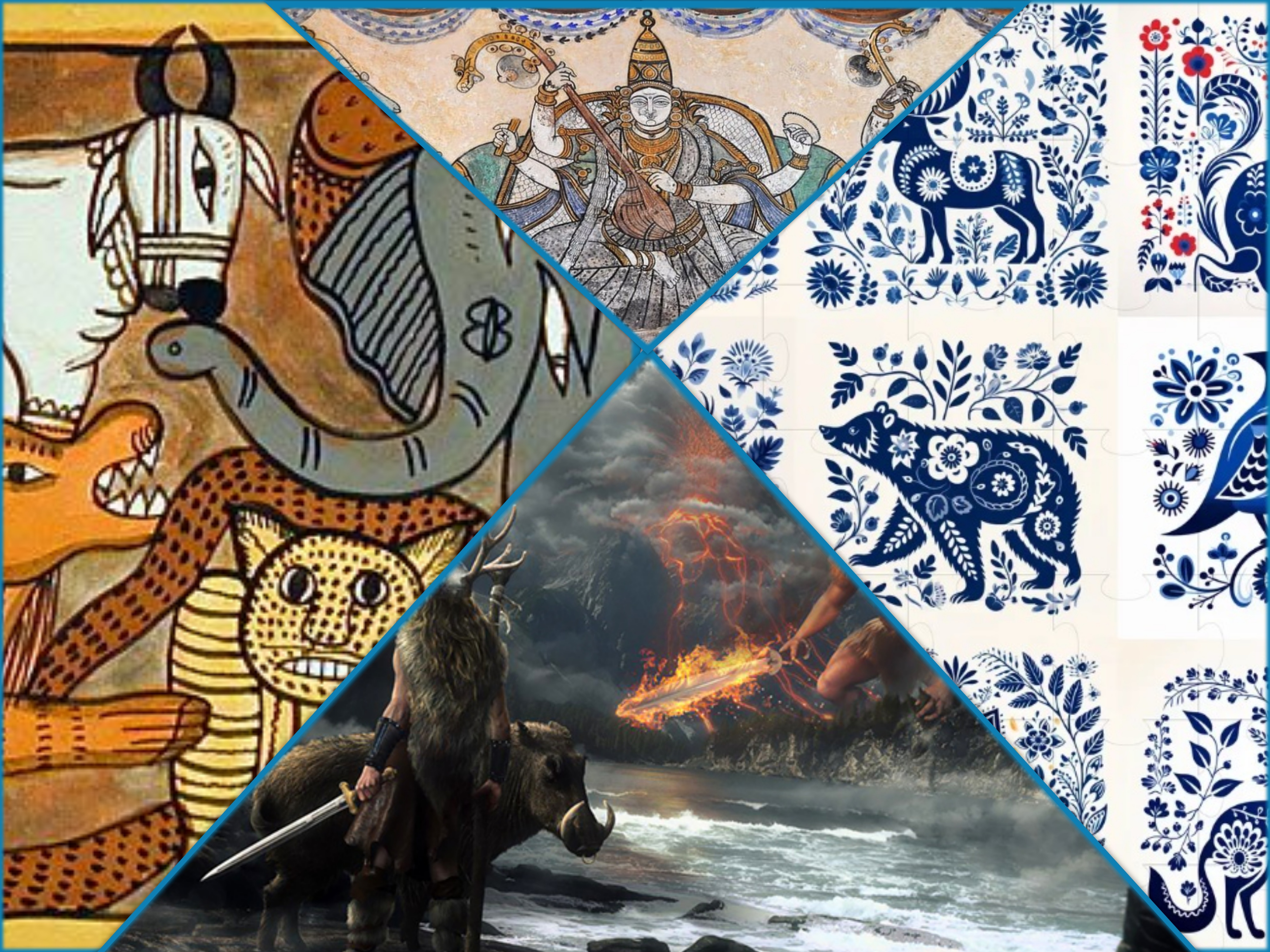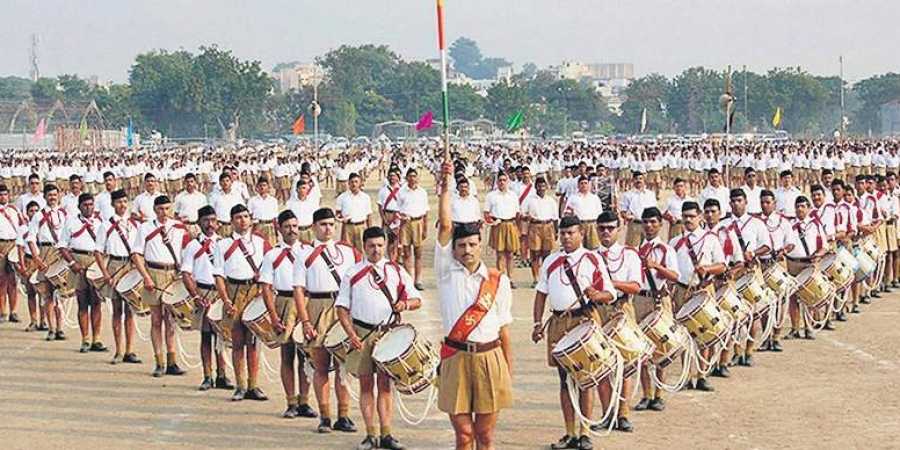- Visitor:73
- Published on: 2025-05-30 08:42 pm
A Furnace of Flesh, a Fortress of Spirit: The Martyrdom of Guru Arjan Dev Ji
Heretical? Yes—but only to those who mistake tyranny for theology. Revolutionary? Absolutely. Guru Arjan was not merely compiling scripture; he was consecrating a new spiritual order—one that neither feared the sword nor bowed before the sultan. The charge levelled against him—blessing the rebel Prince Khusrau, was little more than a political fig leaf. The real “crime” was far more subversive: Guru Arjan offered the people a vision beyond imperial dogma, a fellowship beyond sectarianism, a sovereignty rooted not in conquest but in Shabad—the Word, the Truth, the Eternal.

In the blistering blaze of Lahore’s midsummer sun, the scent of smouldering flesh hung in the air—not from war or plague, but from sanctity itself under siege. A saint sat upon a searing iron plate, as burning sand rained down on his body, his skin blistering and bleeding under the command of a tyrant's will. Yet he neither cried out nor cursed his tormentors. Instead, he uttered the most defiant, most divine words ever spoken in the face of imperial cruelty: “Tera Kiya Meetha Lage (Whatever You do, O Lord, is sweet)".
This was Guru Arjan Dev Ji—the fifth sovereign of the Sikh Gurus—not a martyr in waiting, but a spiritual titan who transformed agony into transcendence. In that crucible of pain, he did not perish; he ascended. His silence shook empires. His stillness set a storm in motion. His martyrdom was not the end of a life, but the ignition of a revolution—a cosmic declaration that tyranny shall never silence the song of the Divine.
The Saint Who Became the Sword’s Song
Guru Arjan Dev Ji (1563–1606) occupies a monumental place not merely in Sikh memory, but in the very annals of dharmic resistance. As the compiler of the Adi Granth, the visionary behind the Harmandir Sahib, and the first martyr of the Sikh tradition, he forged with his life a sacred legacy of scripture, sanctity, and shaheedi. Born under the luminous reign of Emperor Akbar—a ruler known for his dalliance with religious pluralism—Guru Arjan’s early ministry unfolded during an era of dialogue and tolerance. But that light was soon eclipsed. Akbar’s successor, Jahangir, brought with him a return to harsh orthodoxy and the tightening grip of imperial absolutism. Heterodox voices like Guru Arjan’s—rooted in bhakti, equality, and divine liberty—were no longer seen as spiritual paths. They were threats to the throne. But Guru Arjan would not kneel. Not to Jahangir. Not to dogma. Not to death.
A Canon Forged in Fire and Universality
In an age when spiritual knowledge was hoarded by priestly elites and monopolized by state-sanctioned clerics, Guru Arjan Dev Ji performed an act of profound civilizational defiance—he enshrined the sacred in a living scripture accessible to all seekers of Satya. The Adi Granth, completed in 1604, was no mere anthology; it was a dharmic declaration, a sovereign granth that upheld anubhav (inner experience) over authority, and bhakti over birth. Guru Arjan did not simply include diverse voices for the sake of inclusion. He recognized in the utterances of bhaktas like Namdev, Ravidas, and Surdas, and Sufi saints like Sheikh Farid and Bhikhan, a shared devotion to the Nirguna Brahman—the formless divine. These were not gestures of ecumenism but affirmations of an eternal, Sanatan Truth that transcends both ritual rigidity and theological dogma.
By giving voice to Dalits and artisans, saints and rebels, Guru Arjan confronted the tyranny of religious exclusivism, particularly the absolutist claims of Islam. As scholar W.H. McLeod aptly put it, “The Adi Granth is not just a religious text—it is a spiritual constitution for the Sikh community.” And when it was enthroned in the sanctum of the Harmandir Sahib, it became something even greater: the Guru incarnate, the eternal sovereign of the Sikh Panth. And when it was enshrined in the sanctum of the Harmandir Sahib, it became something even greater: the Guru incarnate, the eternal sovereign of the Sikh Panth.
A Temple of Light, a Republic of the Soul
The lake at Amritsar shimmered with stillness, but something revolutionary stirred beneath its waters. Rising from its heart stood the Harmandir Sahib—the Temple of God—not upon a high hill or a throne of marble, but at ground level, where kings and peasants could meet the Divine as equals. Its four entrances, open to all directions, flung wide the doors of spiritual democracy. North, south, east, west—every soul was welcome, regardless of caste, creed, or condition. In its sanctum, there were no priests—only the Shabad, the Word Divine. It was a bold architectural defiance of hierarchy, and a luminous embodiment of Guru Arjan’s theology: that God is not the property of the privileged, but the inheritance of the humble.
The Mughal Empire Trembles
But power abhors what it cannot control. By the dawn of the 17th century, Guru Arjan’s following had swelled into a pan-regional dharmic uprising—not of weapons, but of awakened minds. His authority was not imposed through crowns or coercion; it emanated from the collective conscience of thousands who saw in him the embodiment of Dharma, the living flame of Satya and Nyaya. And that made him dangerous. To an empire that demanded submission—of body, thought, and soul—such spiritual autonomy was intolerable. The Mughal state could tolerate sects that bent the knee, but not sovereigns of the spirit who refused to be co-opted. Guru Arjan offered no allegiance to throne or mosque—only to the timeless truth of the Divine that resided in all. Even Emperor Jahangir, in his own memoirs, the Tuzk-e-Jahangiri, betrays this unease: “He was the author of many heretical writings... I ordered that he be brought into my presence, and handed him over to Murtaza Khan for execution.”
Heretical? Yes—but only to those who mistake tyranny for theology. Revolutionary? Absolutely. Guru Arjan was not merely compiling scripture; he was consecrating a new spiritual order—one that neither feared the sword nor bowed before the sultan. The charge levelled against him—blessing the rebel Prince Khusrau, was little more than a political fig leaf. The real “crime” was far more subversive: Guru Arjan offered the people a vision beyond imperial dogma, a fellowship beyond sectarianism, a sovereignty rooted not in conquest but in Shabad—the Word, the Truth, the Eternal.
And so, the empire did what empires always do when faced with uncompromising righteousness: it tried to extinguish the flame by torturing the flame-bearer. Guru Arjan was subjected to unspeakable agonies—seated on a burning plate, scalded with hot sand—yet not a cry escaped his lips. His silence thundered louder than any rebel’s war cry. His martyrdom was not a defeat—it was a consecration.
Where Flesh Burns and the Soul Blossoms
Guru Arjan was arrested, imprisoned, and subjected to a torment so merciless that even the annals of tyranny shudder to recount it. Blistering sand was poured over his scorched body. He was forced to sit upon burning iron plates under the ruthless sun. No water graced his lips. No shade softened his suffering. And yet—he did not bend, he did not break. He pleaded for no reprieve. He compromised no truth. His only words, radiant in defiance and surrender alike, were: “Tera Kiya Meetha Lage.” This was no capitulation. This was sovereignty of the soul. In that moment of searing agony, Guru Arjan transcended the might of empire. His martyrdom was not the silencing of a rebel—it was the coronation of a saint-king. It did not shatter Sikhism. It steeled it. It cast the Sikh Panth in a new mould—tempered in agony, luminous in purpose.
This was the first shaheedi, the first martyrdom of the Sikh tradition. But it was more than a personal sacrifice. It was the ignition of a new dharmic ethic—where bhakti met shakti, where inner realization fused with outer resistance. And it was Guru Hargobind Ji, his son and successor, who embodied this transformation. He donned two swords—Miriand Piri—temporal and spiritual power. In doing so, he declared to the world: "We are not merely saints who pray. We are sovereigns who protect". The Sikh path henceforth would not retreat from tyranny. It would confront it, not with hate, but with unflinching resolve, rooted in Dharma and fearless love for the Divine.
A Brotherhood Beyond Borders
Guru Arjan’s martyrdom was not merely the grief of the Sikh Panth—it was a wound inscribed upon the very soul of Bharatvarsha. It was not just a cry of anguish from one community, but a clarion call to the entire Indic civilization that dharma itself had been assaulted, and that its guardians must awaken. From the banks of the Ganga to the ghats of Kashi, from the ashrams of sages to the humble homes of devotees, his shaheedi sent shockwaves that echoed far beyond Punjab. He was not slain for tribal identity or narrow sectarian politics. He was tortured to death because he stood as a living, breathing rejection of Islamic imperial absolutism, of forced conversions, of the state’s attempt to crush spiritual autonomy.
Guru Arjan's life and legacy were deeply interwoven with the broader tapestry of Sanatana Dharma. The Adi Granth, which he compiled with divine vision, did not isolate Sikhism from the civilizational stream—it anchored it in it. He enshrined the voices of Hindu saints like Namdev, Ravidas, Surdas, Jaidev, and others alongside the Sikh Gurus and Sufi mystics. These were not token gestures—they were sacred affirmations of bhakti as civilizational unity, a seamless spiritual bond across caste, sect, and geography. He communed with Nath yogis and Vedantic seekers. He upheld the dharmic ideal that Truth is One, though sages call it by many names—but he also drew a sharp line between genuine pluralism and tyrannical exclusivism. It is here that his martyrdom becomes a moment of Shatrubodh—that lost but essential dharmic faculty of discerning friend from foe, dharma from adharma, universalism from conquest. As historian K.S. Lal powerfully observed: “Guru Arjan’s sacrifice was not for a sect, but for dharma as a whole.” Indeed, his was a civilizational sacrifice—an offering to the collective spirit of Bharat, reminding it of its duty to resist dharmadveshi ideologies masquerading as spirituality.
His shaheedi exposed the face of Mughal bigotry beneath the veil of tolerance that Akbar once wore. Jahangir’s own memoirs testify to this: Guru Arjan was executed not for rebellion, but for his growing influence—for offering the people of Bharat a spiritual alternative to imperial Islam, and in doing so, challenging the very foundation of Mughal authority. For countless Hindus, especially in Punjab and the northern heartlands, Guru Arjan became not just a revered martyr but a righteous kshatriya in saintly robes—one who did not raise a sword, yet shattered the sword of tyranny with spiritual radiance.
His death did not signal defeat. It ignited a new fire—the transformation of the Sikh community from a peaceful bhakti movement into a militarized dharmic force under Guru Hargobind Ji and beyond. That fire—of resistance, clarity, and courage—burns to this day in the hearts of all who seek to protect the soul of Bharat from the chains of proselytization, from the poison of appeasement, and from the paralysis of pseudo-secular confusion. Guru Arjan Dev Ji’s martyrdom is a mirror—held up to every generation—to ask: Will you recognize adharma when it wears the mask of peace? Will you stand for truth, even when it burns your skin and breaks your bones? Will you awaken to Shatrubodh before it's too late?
His life is the answer. His death is the call.
A Voice that Still Sings
Guru Arjan’s legacy did not end at martyrdom. His writings, especially the Sukhmani Sahib (“Psalm of Peace”), continue to echo across the centuries. They are not merely hymns—they are meditations of sublime calm amidst chaos, declarations of divine unity amidst division. He wrote not for theologians but for humanity. His words dismantled ritualism, caste, and sectarianism, and in their place offered a path of nam simran (remembrance of the Divine), seva (service), and sahaj (spiritual equipoise). As scholar Harbans Singh observed: “Guru Arjan's poetry touches the mystical and the moral, the philosophical and the practical, giving Sikhism its distinctive character.”
Guru Arjan Dev Ji’s life was scripture in action. His death was not a tragedy—it was a triumph of truth over tyranny. In the fire of his martyrdom was born the flame of Sikh sovereignty, the resolve of a people who would henceforth kneel to none but the Divine. He stood not for one community but for the very soul of Indic civilization—its pluralism, its dignity, and its spiritual fire. His martyrdom remains a clarion call for all who resist oppression, who uphold dharma, and who understand that sometimes, to protect truth, one must be willing to burn and rise.
References
Pashaura Singh, The Guru Granth Sahib: Canon, Meaning and Authority. Oxford University Press, 2000.
W.H. McLeod, Guru Nanak and the Sikh Religion. Oxford University Press, 1968.
Pashaura Singh, Life and Work of Guru Arjan: History, Memory, and Biography in the Sikh Tradition. Oxford University Press, 2006.
Jahangir, Tuzk-e-Jahangiri (Memoirs of Jahangir), trans. Alexander Rogers and Henry Beveridge, 1909.
J.S. Grewal, The Sikhs of the Punjab. Cambridge University Press, 1990.
K.S. Lal, Legacy of Muslim Rule in India. Aditya Prakashan, 1992.
Harbans Singh (Ed.)., The Encyclopedia of Sikhism. Punjabi University, Patiala, 1992.
- 36 min read
- 1
- 0









.jpg)
